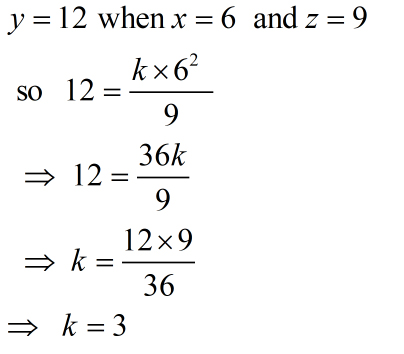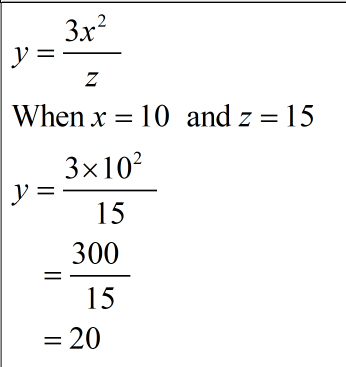Direct proportion
If y is directly proportional to x,
then when x is multiplied by a number so is y.
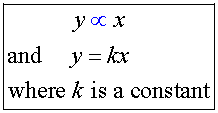
Example
The number of miles covered is directly proportional to the time spent walking.
If 5 miles is covered in 2 days, how many miles will be covered in 7 days ?
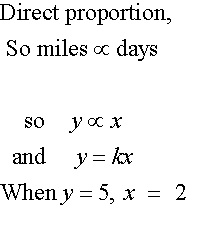
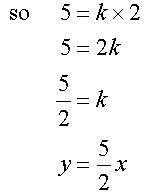
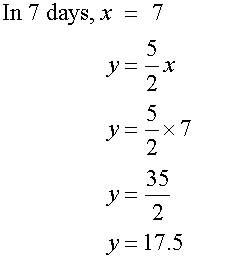
17.5 miles is covered in 7 days.
Example
The cost of bricks is directly proportional .
Fred buys 10 bricks for £5.
George buys 5 bricks for £2.50
How much does Harry pay for 18 bricks ?
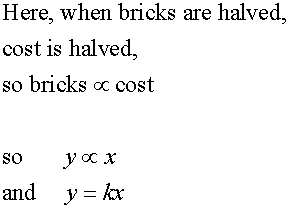
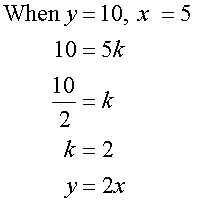
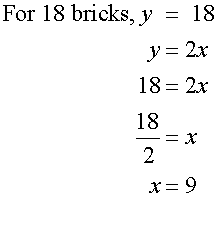
Harry pays £9 for 18 bricks.
Indirect proportion
If y is indirectly proportional to x, then
when x is multiplied by a number,
y is divided by that number, and vice versa.
As one number goes up, the other goes down.
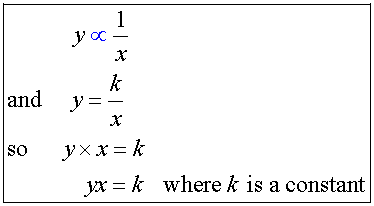
Example
The number of days taken to dig a ditch is inversely proportional to the number of men digging.
If it takes 4 days for 10 men to dig a trench, how long will it take 8 men to dig the trench ?
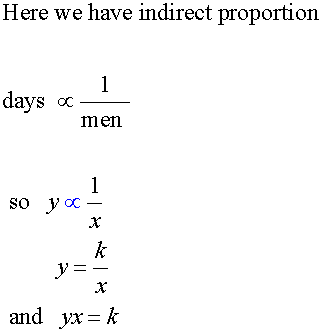
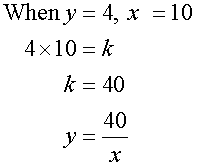
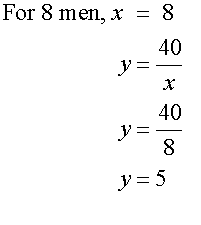
It takes 8 men 5 days.
Squared proportion
If y is directly proportional to x2,
then when x is multiplied by a number,
y is multiplied by the square of that number.
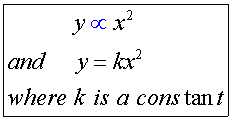
Example
The distance moved by an accelerating car is directly proportional to the square of the amount of time of acceleration.
After 2 seconds, the car has travelled a distance of 12 m.
What is the distance travelled by the car after 9 seconds ?
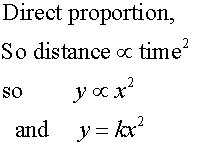
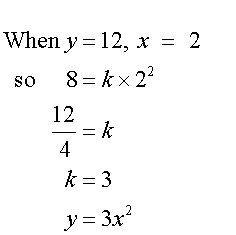
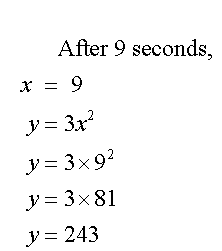
The car has travelled 243 m.
Joint Variation
Example
y varies as x2 and inversely as z.
Given y = 12 when x = 6 and z = 9,
Find y when x = 10 and z = 15

